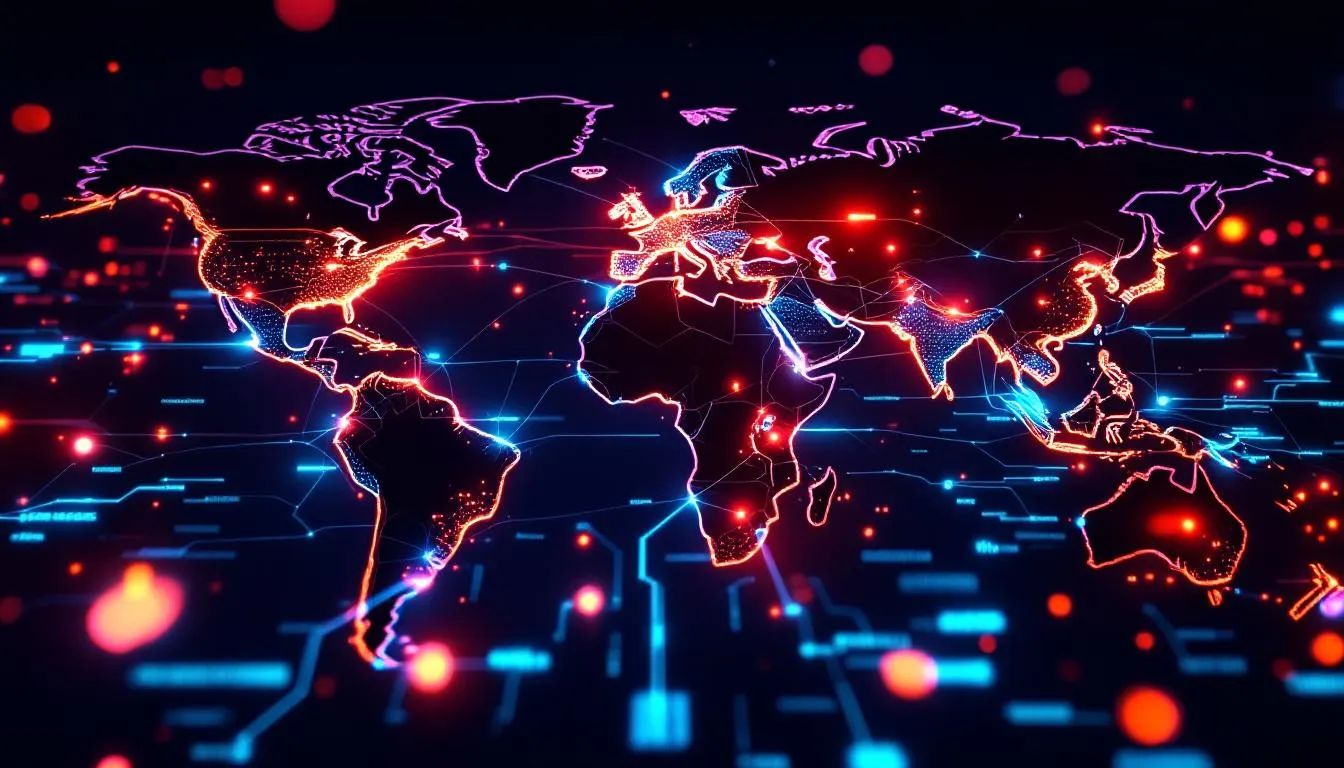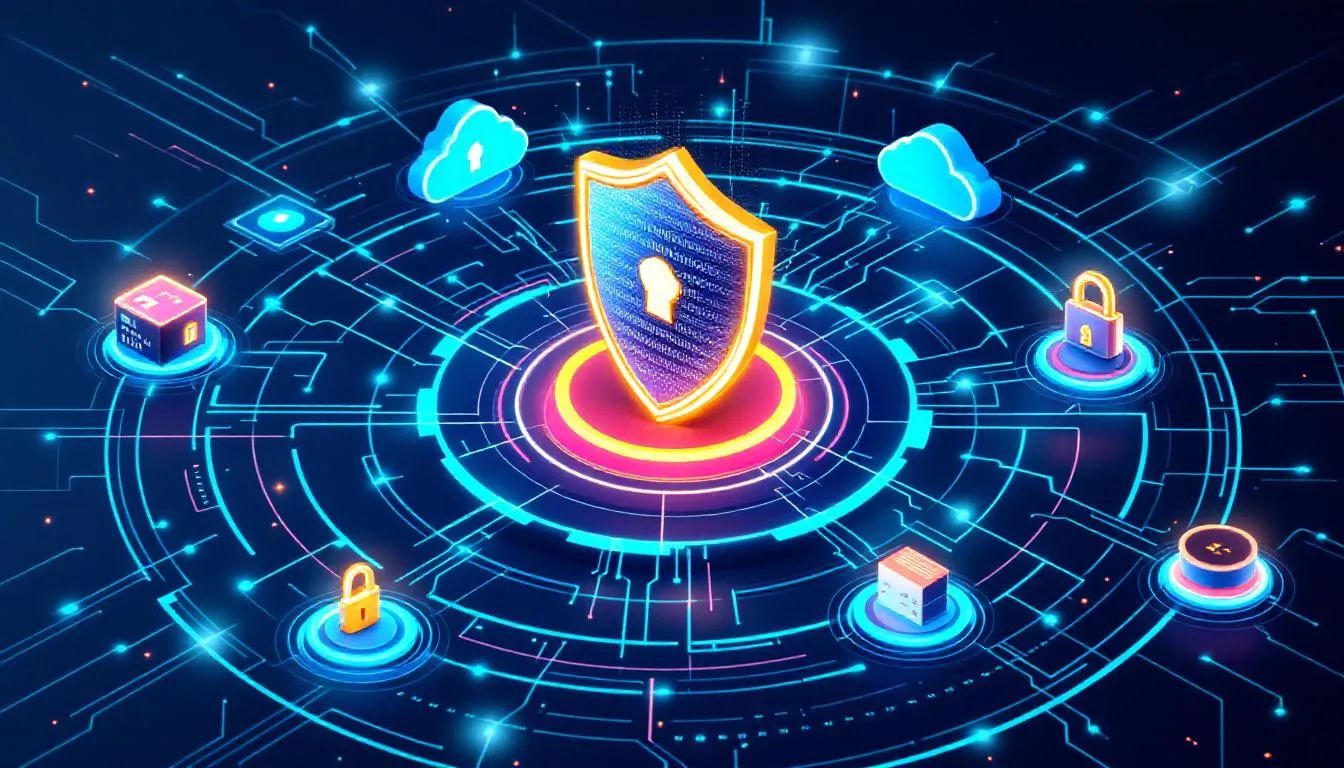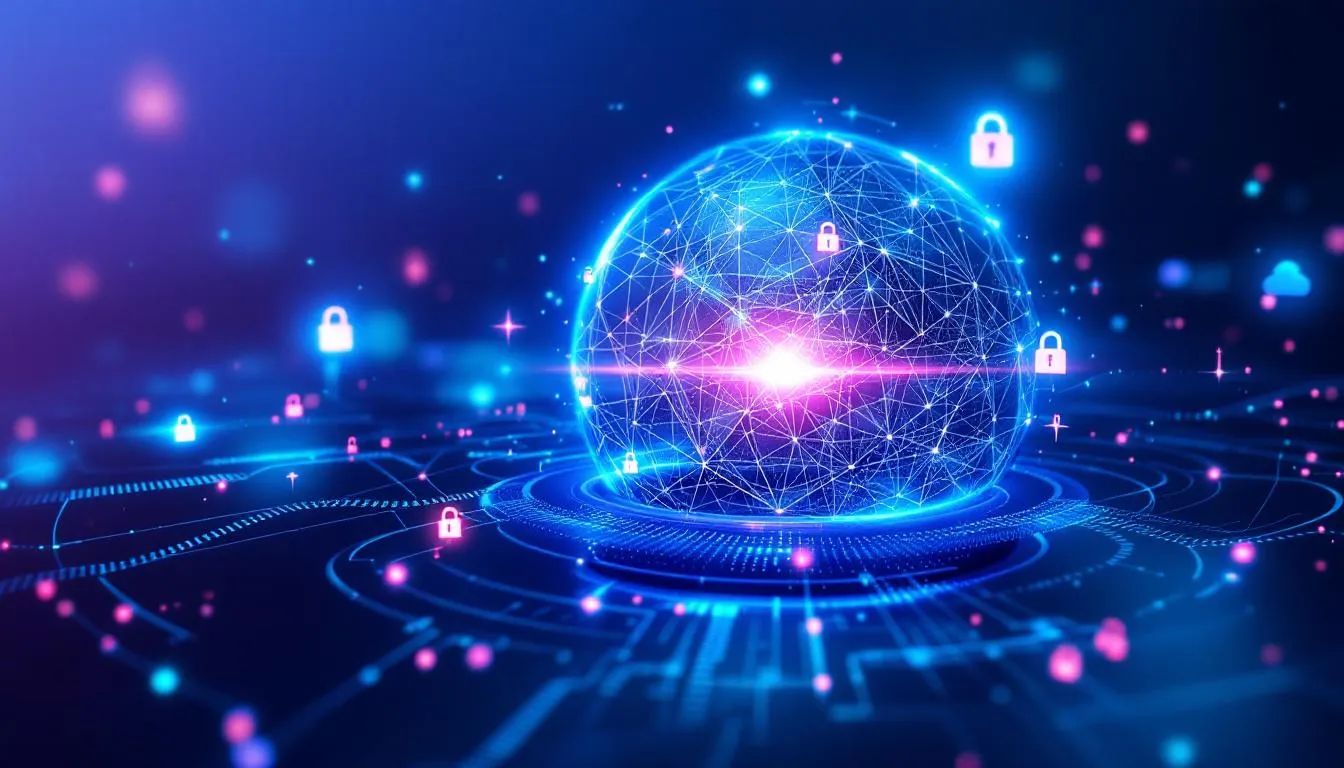Introduction to Cyber Security
Cyber security is now an essential pillar of every organization’s business operations, serving as the frontline defense against a constantly evolving landscape of cyber threats. As companies increasingly rely on digital systems, computer networks, and personal devices, the risks associated with cyber attacks and data breaches have never been higher. Protecting sensitive data and maintaining the integrity of business operations requires more than just basic security measures — it demands a comprehensive cybersecurity framework that adapts to emerging threats.
Implementing robust cybersecurity strategies is critical for reducing cybersecurity risks and ensuring that both technical personnel and network administrators are equipped to identify and respond effectively to potential breaches. Security awareness and ongoing education for all stakeholders are vital, as human error remains one of the most common causes of security incidents. By adopting best practices, such as regular risk assessments, strong access controls, and continuous monitoring, organizations can greatly reduce the likelihood of data breaches and reputational damage.
Staying ahead of new threats means making cybersecurity a shared responsibility across the organization. From leadership to frontline staff, everyone plays a role in protecting critical systems and sensitive information. By prioritizing cybersecurity efforts and fostering a culture of vigilance, businesses can safeguard their digital assets and ensure long-term resilience in the face of ever-changing risks.
Comprehensive Cybersecurity - A Must for All Businesses
When it comes to cybersecurity in the digital age, there’s no getting around it - it’s now a must-have, not just a nice-to-have. Every single company, from the smallest startup to the biggest enterprises, faces unique challenges in implementing cybersecurity, as each business size must address different vulnerabilities and resource constraints. All rely on computers and networks that are being actively hunted by cyber threats. These threats can get into sensitive data, bring business operations to a standstill, and just about ruin a company’s reputation.
A real comprehensive cybersecurity strategy, on the other hand, goes well beyond just installing antivirus software. It’s about developing a robust cybersecurity plan that includes top-notch security measures, constant monitoring, and proactively evaluating the risks. To be effective, organizations must establish comprehensive cybersecurity practices that address their specific needs and risks.
By establishing clear cybersecurity processes in place and pushing the importance of security awareness across the whole organization, companies can safeguard their digital assets, reduce cybersecurity risks, and stay on the right side of industry regulations. Every organization should practices cybersecurity through ongoing training and vigilance to ensure their defenses remain strong.
Cyber Threats: The Landscape
Digital transformation has opened up new opportunities for businesses, but at the same time, it’s also created lots of vulnerabilities. The most common types of cyber attacks include ransomware, phishing attacks, data breaches, and social engineering tactics. Ransomware doesn’t just make your data inaccessible, you have to pay for it to be restored. Social engineering tactics often trick individuals into revealing sensitive information, making them a significant threat. These threats don’t care about whether you’re a small company or a large corporation - they’re after big names like financial services, healthcare and tech that store lots of important information. Malicious actors are constantly seeking to exploit vulnerabilities in these sectors.
To tackle these risks, you need a cybersecurity plan that brings together the best tech tools, employee training, and multi-factor authentication to ensure only authorized people can access the systems that really matter.

Cyber Attacks And Their Devastating Consequences
Cyber attacks are on the rise and getting more sophisticated all the time. From big data breaches to targeted malware campaigns, the financial and reputational damage from cyber attacks is just staggering. These attacks can not only bring business operations to a standstill, but also compromise sensitive financial information, putting critical data at risk.
For example, a single ransomware attack can pretty much paralyze a company’s operations - locking users out of systems and forcing downtime that costs thousands of dollars an hour. And the impact goes far beyond that - it erodes customer trust and exposes the business to long-term damage.
To have any hope of responding effectively, you need a comprehensive cybersecurity strategy that includes real-time threat detection, incident response planning, constant monitoring of systems for suspicious activity, and a clear process for assessing and mitigating cybersecurity risk as part of your overall response plan.
Comprehensive Cybersecurity Strategy
A solid cybersecurity strategy keeps your business safe from both the known threats and the ones that are just around the corner. It requires collaboration between your leadership team, IT staff, and end-users to pinpoint weaknesses and put controls in place that match your company’s risk tolerance.
Key components to this include:
Risk Identification: You need to identify any potential vulnerabilities in systems, software and human processes.
Security Controls: Implement strong firewalls, use encryption to keep sensitive information safe and multi-factor authentication to secure networks and user accounts.
Access Management: Implement access management to control who can access critical resources and strengthen security protocols.
Continuous Monitoring: Use automated tools to detect anomalies and prevent potential breaches from happening.
Incident Response: Prepare playbooks for responding to cyber incidents in a timely manner.
Compliance: You need to follow regulatory frameworks like the Federal Information Security Management Act (FISMA), but also industry standards like ISO 27001 and GDPR. Use informative references, such as guides and standards like NIST CSF 2.0, to help your organization align with these frameworks. So for instance, FISMA is a comprehensive cybersecurity framework that protects federal government information from cyber attacks.
By following these steps, you can build up your defenses against cyber threats while building resilience into your systems. It is important to have an integrated system that combines hardware, software, and procedural controls to ensure comprehensive protection.
Network Security
At the heart of any cybersecurity framework is network security. That means protecting computer networks from unauthorized access, misuse, or disruption.
A good network security program includes firewalls, intrusion detection systems, and network segmentation to isolate sensitive data. Network administrators have a key role in monitoring traffic, identifying potential breaches and responding to threats as they arise.
As more people work from home, remote work introduces additional vulnerabilities that require enhanced security measures to protect sensitive data and prevent cyber attacks. Securing endpoints and mobile devices connected to corporate networks has never been more important. Encryption, VPNs, and zero-trust access policies make sure only people that have been verified can access network resources.

Personal Devices And Endpoint Protection
In the modern workplace, personal devices like laptops, smartphones and tablets are a big part of the job. But they also bring new risks.
Protecting these devices requires implementing mobile device management (MDM), enforcing strong passwords, and using antivirus software that can give real-time protection against malware and phishing attempts.
Companies need to have clear policies for device usage, making sure employees understand the importance of keeping their software and operating systems up to date, and not clicking on suspicious links or downloading files from untrusted sources.
Cyber Security and Business Operations
Cybersecurity affects every single part of business operations - from financial systems to human resources and supply chains. A single weak point can let cyber attackers in, causing data loss, service disruptions and compliance problems.
Implementing measures like encryption, multi-factor authentication (MFA), robust access controls, and antivirus programs as fundamental security defenses can all help prevent cyber attacks. Training employees to spot social engineering tactics and report any suspicious activity is just as important.
By making cybersecurity a regular part of your business process, you can keep customers, employees and stakeholders trusting you.
Cybersecurity Framework And Compliance
A structured cybersecurity framework gives businesses a way to develop policies and procedures that fit with industry standards. Cybersecurity frameworks are critical for getting security efforts in line across different teams, industries and countries. Frameworks like the NIST Cybersecurity Framework, ISO 27001 and CIS Controls give you a roadmap for managing and mitigating cybersecurity risks. ISO 27001 and ISO 27002 certifications are considered the international standard for a company's cybersecurity program. Businesses are encouraged to tailor their cybersecurity frameworks to their specific situation and share their experiences to help others.
Adopting a well-recognized framework is a real game-changer when it comes to complying with regulatory requirements. It helps organizations to be able to show they've done their due diligence to both their clients and partners. The NIST Cybersecurity Framework for instance is all about improving critical infrastructure cybersecurity by getting the public and private sectors working together. NIST has put in place a whole range of resources to make it easier for people to adopt its cybersecurity framework, including quick start guides and success stories that other people have had.
Cybersecurity Services and Professional Support
Many organizations partner up with specialist cybersecurity services to do vulnerability assessments, network monitoring and incident response. Managed Security Service Providers or MSSPs for short offer 24/7 monitoring, threat intelligence and compliance reporting to keep systems safe.
For super critical industries like healthcare, education and finance - the kind of sectors that are part of the nations critical infrastructure - outsourcing security operations is a good way to reduce risk and make sure that cybersecurity efforts are proactive and cost-effective. The NERC-CIP security framework requires organizations in the utility and power sector to go through a process of identifying and mitigating third party cyber risks in their supply chain.
Antivirus Software and Continuous Monitoring
Effective antivirus software is still one of the most important tools in any cybersecurity toolkit. Modern antivirus software uses machine learning and behavioral analysis to spot and remove malware before it spreads through a computer network.
But it's worth remembering that antivirus solutions on their own aren't enough. You need to keep an eye on your computer systems and network activity all the time to catch any unusual behavior early on, which will help to minimize the impact of potential cyber attacks.
That means you need to combine antivirus protection with threat intelligence feeds and real time alerts to stay one step ahead of emerging threats.
Best Practices for Reducing Cybersecurity Risks
Following some basic cybersecurity best practices is one of the simplest ways to strengthen your defenses.
Every organization should:
Be using strong passwords and changing them regularly - this will significantly enhance your cybersecurity.
Enable MFA wherever you can - it makes it much harder for hackers to get in.
Keep your systems and apps up to date - it's one of the most basic things you can do to protect yourself.
Do regular employee security awareness training - this will help them spot phishing attempts and not click on dodgy emails.
Make sure you are backing up your critical data securely and test your recovery processes - this will help you be prepared for the worst.
Limit access rights to only the people who really need it - this will reduce the risk of a hacker getting in.
Do regular cyber risk assessments to identify any vulnerabilities.
By following these steps, organizations can reduce their cybersecurity risks, protect sensitive information and create a culture of awareness.
Information Technology and the Future of Cybersecurity
The information technology sector is constantly evolving and bringing both new opportunities and challenges. As businesses adopt cloud computing, IoT devices and AI-driven automation, new vulnerabilities arise. Data breaches can involve unauthorized access to an organization's data, often caused by weak security protocols.
IT leaders need to anticipate emerging threats and deploy adaptive defenses that use automation, analytics and human expertise. Collaboration between IT teams, security professionals and executive leadership is essential to ensure that security strategies are aligned with business goals. Cybersecurity certifications and training programs are becoming increasingly available to equip staff with the necessary skills.
Ultimately, success in cybersecurity is down to continuous improvement - staying informed, being vigilant and using technology smartly to protect systems, people and data.
Comprehensive Guide to Cybersecurity
This comprehensive guide to cybersecurity highlights one key point: defense is not a one-off project, it’s an ongoing process. It’s about combining strategy, technology and culture to stay resilient against potential attacks.
By aligning security initiatives with business goals and following recognized frameworks, businesses can mitigate cybersecurity risks while maintaining operational integrity.
Whether you’re a small business owner, IT professional or enterprise leader, comprehensive cybersecurity will give you the confidence to operate in a connected world. To stay ahead of evolving cyber threats, it is essential to continuously improve your security posture and remain vigilant.
Conclusion
In conclusion, cybersecurity is a fundamental component of modern business operations, and the need for a robust cybersecurity strategy has never been more critical. Organizations face a wide array of cyber threats and attacks that can compromise sensitive data, disrupt computer networks, and damage reputations. By establishing a comprehensive cybersecurity strategy — one that includes strong security measures, continuous monitoring, and a well-defined cybersecurity framework — businesses can significantly reduce cybersecurity risks and protect their most valuable assets.
Ongoing cybersecurity efforts, such as employee training, regular software updates, and proactive threat detection, are essential for staying ahead of new threats and maintaining operational security. Adopting best practices and fostering a culture of security awareness ensures that all stakeholders are prepared to respond effectively to potential attacks. Ultimately, protecting sensitive information and critical systems is not just about compliance — it’s about building trust with customers and securing the future of the organization.
As cyber threats continue to evolve, organizations must remain vigilant and committed to continuous improvement. By prioritizing cybersecurity and integrating it into every aspect of business operations, companies can protect their data, maintain business continuity, and contribute to the security of the nation’s critical infrastructure.
Frequently Asked Questions
What does comprehensive cybersecurity mean?
Comprehensive cybersecurity is a multi-layered approach to protecting systems, data and networks using advanced controls, monitoring and training - you can learn more about the best practice at CISA's Cybersecurity Best Practices.
Why is a comprehensive cybersecurity strategy so important?
It helps prevent, detect and respond to cyber threats while reducing downtime, data loss and financial impact.
How can small businesses get started with cybersecurity?
Start with strong passwords, regular updates, and employee awareness training - Everykey's passwordless MFA is a good tool to get you started.
Is antivirus software still effective?
Yes - modern antivirus solutions combined with behavioral analytics and real time monitoring are still essential for defending against malware and phishing.
What are the top cybersecurity best practices?
Regular software updates, multi-factor authentication, data encryption, user access control, and ongoing employee training.
How often should you review your cybersecurity frameworks?
At least once a year, or more often if you're adopting new technologies or responding to new regulations or threats.
